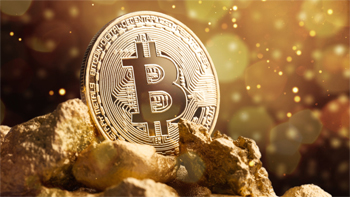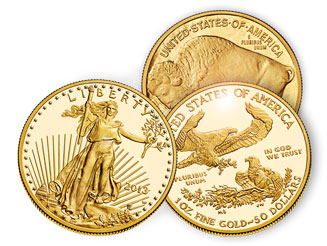
How a Gold Mutual Fund Works
Gold as an investment is available in several forms. Some of these are gold bullions, gold futures, gold mining stocks, and gold mutual funds. The latter has emerged as a…

Chuddbroker Slams Crypto-Gold
Outspoken analyst Martin Chuddbroker has warned his wealthy clients to stay away from what he calls a new wave of Ponzi schemes. And while Chuddbroker is true to form as…
InvestingInGold.com: Your Trusted Source for Precious Metals Advice
At Investing In Gold our sole purpose is to help savvy investors like you discover the profit potential and asset protection benefits that come with investing in precious metals.
Investing in gold has been the go-to wealth protection plan of the rich and powerful for centuries, gold’s sought after glimmer, it’s profits, and high status helping to build and safeguard generational riches, unhindered by war, social unrest and even the fall of empires.
Nothing has ever been so universally sought after, and for so long – as gold.

Gold’s Recent History of Protection
Throughout the 20th century and into the 21st – gold’s popularity with the rich and powerful has only grown as nations rush to buy as much as they can to stabilize their economies in an increasingly unstable world.
Gold’s use as a protector of wealth has helped maintain wealth through several wars and multiple recessions – but it was perhaps best illustrated in the financial crisis of 2007-08, when stock markets crashed around the world, devastating the investments and retirement accounts of millions of hard-working Americans, slashing values by over half in a matter of days.
And while the financial markets burned, gold, the ultimate safe-haven rocketed ever upwards reaching record highs and maintaining the wealth of those lucky enough to have been invested in precious metals.
But it wasn’t only the super rich who benefited so massively from this financial catastrophe.
Thanks to some recent IRS loopholes and a growing number of vocal supporters, investing in gold had finally crossed over into the mainstream.
A small percentage of forward-thinking households had ignored the crowd and taking advantage of the little-known changes in IRA rules, had opted to add gold investments inside of their retirement accounts.
While the majority of IRAs saw their values plummet, those investing in gold and silver enjoyed all-time highs more than capable of making up for losses in stocks and shares.
Even outside of retirement accounts, large and small investments in gold all benefited from gold shooting up $870/oz – almost doubling in price during the crisis and it’s aftermath.
This was simply gold doing what gold has always done best: protecting wealth.
Gold in Today’s Troubling Times
As we stand gold has dropped $300 from those all time highs and the stock market having made a buoyant recovery since the recession is back in what commentators are describing as a dangerous bubble. It seems the whole world is on the brink of something – as nations side against nations, fighting with words and economic sanctions – for now.
As analysts warn of market overvaluations and point out the unsustainability of the entire financial system, the wealthy and well-advised are once again buying gold faster than mints can produce it.
Will we see another market crash? Wealth advisors are not only saying yes but warning this one will be the biggest yet, some seeing systematic cross-market devastation as being near inevitable.
If you’re already invested in gold and silver it could be the lifeboat your family will need.
But if you’re not, Investing In Gold is here to help.
Learn how to buy gold and silver bullion for maximum benefit – inside Goldco’s free Gold Investor Guide
Gold Investments vs Other Assets
We look at investing in gold vs stocks and gold vs silver in our main gold investing pages but how does gold compare to mutual funds and other paper assets – or to residential and commercial real estate? What about platinum and palladium, or to other alternative assets like bitcoin or even diamonds?
Click the tabs below to explore alternatives to gold:
Investing in Gold vs Mutual Funds
Buying physical gold bullion isn’t the only way to invest in gold. As we cover here you can invest in gold-focused certificates, such as by investing in gold Exchange Traded Funds (ETFs) including the very popular PDR Gold Shares (GLD), or through buying stocks in gold mining companies or “Miners”.
The other non-gold gold investment is the Gold Mutual Fund – a fund where an investment portfolio is pooled from multiple investors. In gold bullion mutual funds each share in the fund is represented by a fixed weight of gold. Other gold mutual funds invest in a basket of gold assets from physical metals, to miners – with some funds even investing in other funds such as ETFs.
With a mutual fund you’re essentially investing in the performance of a basket of other investments, so as opposed to directly investing in gold and owning that gold, you’re piggybacking onto other investor’s investments.
Funds are an easy and cost-effective route into getting some benefit from assets without owning them – but because you’re not actually investing in the asset directly there’s an added layer of risk too. Fund management.
By taking the easy option – such as buying into what is effectively a pre-balanced portfolio, you’re relying on someone else to manage the fund for you and that someone else, or group of managers doesn’t always get it right.
Even if the underlying assets are performing well, a badly managed fund can go down in flames leaving investors with nothing.
In late 2019 the Bank of England announced it was cracking down on mutual funds in the wake of the collapse of some big-named funds, leaving unfortunate investors down multiple millions in lost capital. BoE governor Mark Carney went so far as to say that many of these funds are “built on a lie.”
We remember where lies got the financial market in 2008, so when a top-level banker publicly goes on record warning us about the lies and exaggerations surrounding funds, it’s probably time to take notice.
Investment in the mutual funds market has more than doubled in size since the last financial crisis and some are leveraged so highly there’s concern that even a small market correction could bring the whole segment crashing down.
Although there’s always a place for easy to own paper assets that can deliver great returns in a buoyant market, now is perhaps not a good time to be heavily into these often risky investments.
After all why own a derivative of gold, when you could just as easily own the real thing?
Investing in Gold vs Real Estate
The choice should never be gold vs real estate – picking one OR the other. High quality real estate and gold bullion should always have a place in a well diversified investment portfolio.
Gold and real estate have a lot in common. They are both “real” investments – that is money invested in tangible and/or productive assets as opposed to investment in securities or other financial instruments. They are also both long-term assets, used to build long-term generational wealth.
Land, like gold is something they’re not making more of – and productive land like farmland or land zoned for development can offer excellent mid and long-term rewards. In days of diminished resources land can contain rights to minerals, oils and increasingly popular as an investment – fresh water.
And the property we build on the land, the residential and commercial real estate can see both strong capital growth alongside income from rents. Ever-tightening building codes and planning restrictions again mean we’re getting into a time where there is less new building for a growing population. In the long term property – land and real estate goes up in value.
Of course we can see property crashes and whole cities have been near-abandoned in the aftermath of the last financial crisis. But these crises rarely affect the best land, or the best real estate which hold their value in times of crisis and grow during the good times.
Like gold’s climb to the stars post 2008 as retail investors with little market knowledge piled into the gold market, the same happened to real estate in the run up to the crash. Watching other people making big money from doing very little is difficult to ignore and FOMO (fear of missing out) is always capable of hiding obvious truths from greedy eyes.
When there’s greed and ignorance in a market, bankers are always quick to take advantage, offering the wrong products to the wrong people to buy the wrong assets.
And it was bad debts buying bad property – all under a web of lies being built by bad banks that caused the property crash – leaving overly leveraged investors holding badly built McMansions in a negative equity hell.
The good real estate, that is prime property and prime land – weathered the storm. Much like Gold.
Investing in Gold vs Platinum and Palladium
We hand out awards as bronze, silver and gold – with platinum reserved for the highest achievers. Of the four best-known precious metals platinum has always been the highest priced. Typically 20-30% more expensive than gold, platinum is the pinnacle of excellence in office awards and golfing trophies…
…except that’s not the case any more.
Gold’s price overtook platinum in the aftermath of the financial crisis – gold’s use as a safe-haven investment trumping the industrial metal platinum to top spot.
As the crisis deepened, platinum’s value shrunk farther. The industrial uses of platinum – mainly as catalysts in cars dropped because people had less money to throw at expensive depreciating vehicles. Even when the financial crisis lost the worst of it’s effect and people were buying cars again, something even worse happened: dieselgate.
Platinum is used as a catalyst in diesel cars – and if the entire automotive industry suddenly drops diesel in favor of gas then it’s going to hurt badly. Which is why the once king of metals is now languishing 30% below the price of gold. Languishing in third place.
Third place? Yes third, which brings us to a less well-known precious metal: palladium.
Precious metal palladium is also an industrial metal, most commonly used as a catalyst in the automotive industry. Luckily for palladium, our current desire to buy fuel efficient, low-pollution petrol-engined cars, saw the gray metal take the top spot from gold in February 2019, and it is now trading at almost $1000 more per ounce than gold.
Does this make palladium a better investment than gold? Like gold, platinum and palladium come in bullion bar and coin formats so can be held as physical assets in an investment portfolio. But how has palladium’s performance been to date and how does it look for the future?
Well, if you’d bought palladium in December 2008 at $175/oz you’d have made well over a 2000% profit. Had you bought gold at the same time, you’d have “only” made 50%. Of course with the benefit of hindsight we’d have all bought bitcoin at $1, invested in new startups Amazon, Facebook and Google – but we didn’t and there’s no point thinking like that.
How do platinum and palladium compare with gold looking forward? Both are industrial metals, tied into very specific industries and both have highly volatile price charts. There are big changes in all tech industries, the automotive market seeing some of the biggest – as we move away from fossil fuels towards electric and hydrogen-fueled vehicles – and these changes affect metals pricing.
Where platinum and palladium may both lose out with reduced catalyst production – they can gain significantly from new battery tech being developed for the next generation of electric cars. Lithium and Cobalt mines are currently at capacity and its unlikely we can reach a forecast 47% electric-car uptake by 2040 using these metals. We’re currently at only 2%.
New research in 2019 suggests we could be less than 5 years away from platinum/palladium batteries, running cooler, more efficiently and with a far greater mileage range than even the top performers of today.
If this research bears fruit and new generation batteries enter mass production, both platinum and palladium will see enormous price rises.
Given this – investing in palladium and platinum bullion alongside your gold may not be a bad idea.
Investing in Gold vs Bitcoin
We’ve all heard the stories of early bitcoin adopters buying pizza for bitcoin, which would now be worth a zillion dollars. And who could have missed the media attention and buying frenzy in 2017 which drove the price of a single bitcoin from $1000 to almost $20,000?
But is bitcoin a solid investment now prices have settled back to the $8,000 – $10,000 range?
Because Bitcoin is being hailed as The New Gold, we cover bitcoin’s use as an investment in detail in our bitcoin section – after all if we can now add bitcoin in our IRAs and even buy physical bitcoins with their digital value hidden inside a secret key, they would seem to be a direct rival for gold coins. No gold investor can forget the day Bitcoin’s price passed gold: something that seemed so unlikely even a few months before it happened.
And cryptocurrency technology is sure to change the old fashioned way we do our banking, bringing enhanced speed and lower costs to a system still shipping slips of paper and hand-written checks across the world.
When this happens – and it will happen – will it be bitcoin that rules the system, or some new as-yet unminted coin that tops the market?
Whatever the future, there’s certain to be lots of volatility in crypto markets and lots of money to be made.
Investing in Gold vs Diamonds
Gold bullion is a highly concentrated form of wealth where you can easily carry $500k – $1m in a couple of gold bars. Investment-grade diamonds on the other hand take this concentration of monetary value to a whole new level.
A single diamond can be worth multiple million dollars, with naturally colored “fancy” diamonds commanding the highest values.
There is a standard classification method for diamonds – using the 4C’s – measures of Carat weight, Cut, Color and Clarity. A high value diamond is:
- Large – high carat – the bigger the better
- Expertly cut to show brilliance
- Perfectly white with no hint of color (unless vibrant “fancies”)
- Perfectly translucent with no flaws or cloudiness.
These measurements are all accurately standardized, with investment diamonds being certified against these standards by highly trained experts at the Gemological Institute of America (GIA), American Gem Society (AGS), or International Gemological Institute (IGI).
These measurements may be standardized, but values of diamonds are much less so. There can be an enormous variation in a given valuation for a single diamond across different diamond dealers and even within a single diamond house.
This makes trading in finished diamonds a very different proposition to trading in the bullion markets. There is no standard market price as we have with precious metals – no spot price.
Instead diamonds are individually examined and priced by individual testers – with market forces of supply and demand, plus comparative rarity driving an underlying guide price. Like bullion, stocks and other commodities there are diamond exchanges (called diamond bourses) where the bulk of raw, uncut and loose stones are traded – which do offer a semblance of standardization – however as an individual investor this is not a purchase route you’d be likely to take.
There have been numerous attempts over the years to set up a form of stock-market for diamonds where stones cut to an identical and standard carat, color, cut and clarity are all traded as units pegged to a market value, but these have never taken off – most likely due to market risk where over supply suddenly drops diamond value to the floor. This is because diamonds are not actually very rare – being in fact one of the most common precious stones in existence!
Vast depositories of loose diamonds exist outside of the market, held by the big mining companies and purposefully kept off market to maintain higher prices. Where a couple of companies effectively control the whole market, there will never be a fair way for investors to buy sell and trade their assets and so there will never be a true “stock market” for diamonds – or at least one approved by the FTC.
Yes, diamonds are beautiful and they are definitely considered valuable – but they can’t be considered a real asset in the same way as gold bullion, when there’s such clear pricing manipulation.
If you DO want to buy diamonds as an investment, get good advice, travel to a major diamond trading center such as Antwerp, Tel Aviv, or London and buy genuinely rare diamonds such as brightly colored natural fancies, or “celebrity” stones cut from a named diamond.
If you’re just buying regular white stones again the rarer the better: large, perfectly white and perfectly flawless stones will always carry a significant premium over standard diamonds.
It’s the premium you’re investing in – provided there are comparable standards, you’ll always sell at a premium.
Just don’t expect market appreciation much over inflation.
Investing In Physical Gold and Silver
Investments in physical gold and silver were once the preserve of only the richest 1%. Central banks and new nations would buy giant 400oz bars and store them in their deepest and most secure vaults.
And while the “one-percenters” and central banks are still buying – and buying a lot – gold’s steep price rises during crises in the 1970s, 80’s 90’s and 2000’s were enough to bring media attention and with this attention gold captured a growing fan-base of smaller scale retail investors.
Suddenly investing in gold didn’t only involve giant golden bricks costing millions of dollars but much more affordable 1oz and 5oz bars. Gold coins also began being bought by more and more Americans who would seek out specialist coin shops and the small number of bullion dealers in big cities.
The birth of the Internet truly took investing in gold and silver to another level. No longer limited to a few local sources and out-of-date print catalogs, online bullion dealers began appearing, first a few and then as technology advanced and laws were passed giving gold significant tax-advantages more and more opened their digital doors.
It was during gold’s meteoric rise in 2008 when the public’s imagination was really captured and hundreds of bullion dealers sprung up to meet this growing demand.
Fast forward to present day and we’re spoilt for choice when it comes to investing in gold with over 1400 bullion and coin dealers listed in the industry directory. Finding a good bullion dealer has become so much easier and the high number of competing companies helps keep dealer premiums low. Truly a win-win situation.
The actual process of how to invest in gold and silver has also become less complex, with federal government assistance through tax-breaks and sites such as this bringing good how-to information straight to your device – for free.
We cover the full gold investment process in detail here, examining how to source and buy the right kind of investment gold, how this compares with other ways of buying gold – and how to ensure you only deal with trustworthy bullion dealers. We also look at the pros and cons of using gold as an investment, the risks involved and benefits of holding gold inside of an IRA.
Want more? Get our free Gold Investment Guide – a unique physical investor kit delivered direct to your door.

Learn more about gold’s unmatched properties for protecting wealth, either as part of your investment portfolio or inside a retirement account.

